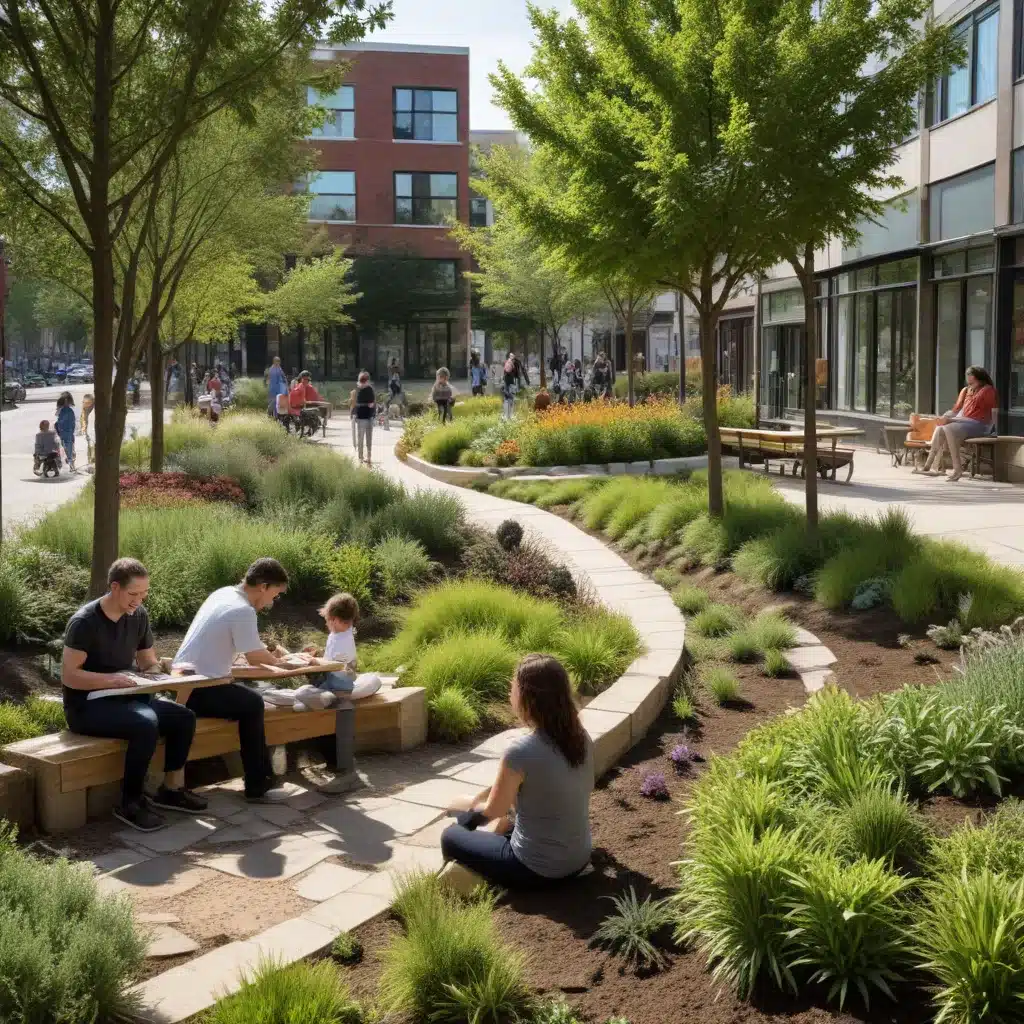
Community Design
Principles of Community-Oriented Landscaping
Thoughtfully designed urban green spaces can cultivate a profound sense of community and belonging. Landscape architects are instrumental in crafting public landscapes that encourage positive social interactions and foster a shared civic identity. By applying core principles of community-oriented design, they can transform ordinary parks and greenways into vibrant hubs of social activity.
One foundational principle is promoting interpersonal connections. Strategic placement of seating areas, shelters, and gathering spots invites residents to linger, converse, and form meaningful bonds. Designers may incorporate elements like communal gardens, playgrounds, and multi-use pathways to facilitate chance encounters and shared experiences. Integrating flexible, programmable spaces also allows the community to shape the landscape over time through events, classes, and volunteer initiatives.
Equally vital is embracing inclusive design. Successful community landscapes cater to diverse user groups, providing amenities and accessibility features that accommodate people of all ages, abilities, and backgrounds. This may involve incorporating universal design standards, incorporating multilingual signage, and ensuring equitable distribution of resources across neighborhoods. Amplifying marginalized voices in the design process is also crucial for fostering a true sense of shared ownership.
Fostering Interpersonal Connections
Cultivating interpersonal connections is a central aim of community-oriented landscape design. By strategically arranging seating, shelters, and gathering spaces, designers can encourage residents to linger, converse, and form meaningful bonds. Elements like communal gardens, playgrounds, and multi-use pathways facilitate chance encounters and shared experiences, fostering a sense of community.
Inclusive Design Considerations
Embracing inclusive design is essential for crafting community landscapes that cater to diverse user groups. Successful public spaces incorporate accessibility features, multilingual signage, and equitable distribution of resources across neighborhoods. Amplifying marginalized voices in the design process is also crucial for fostering a true sense of shared ownership and belonging.
Social Interaction in Public Spaces
Design Elements for Gathering Areas
Well-designed gathering areas within urban green spaces are fundamental to cultivating social interaction. Landscape architects thoughtfully position benches, tables, and other seating options to promote face-to-face dialogue and facilitate spontaneous conversations. Shaded structures, such as pavilions and pergolas, provide comfortable settings for groups to convene. Integrating features like community gardens, playgrounds, and interactive art installations further encourage people to linger, explore, and connect.
Promoting Serendipitous Encounters
Beyond designated gathering areas, community landscapes can also foster serendipitous encounters that spark new connections. Meandering pathways, strategically placed nodes, and visual cues can guide people through the space, increasing the likelihood of chance meetings. Designers may also incorporate elements like water features, public art, and dynamic programming to captivate the senses and draw people together.
Accessibility and Universal Design
Ensuring accessibility and adhering to universal design principles is crucial for creating inclusive community landscapes. Designers prioritize features like wide, level walkways, gradual slopes, and tactile guidance systems to accommodate visitors of all ages and abilities. Providing multiple entry points, ample seating options, and intuitive wayfinding signage further enhances the inclusivity of these shared spaces.
Landscape Architecture and Placemaking
The Role of Landscape Architects
Landscape architects play a pivotal role in crafting community landscapes that foster social interaction and a shared sense of place. Trained in the art and science of designing outdoor environments, they leverage their expertise in plant selection, spatial organization, and user experience to create vibrant public realms. By collaborating closely with community stakeholders, landscape architects can ensure their designs reflect the unique character, needs, and aspirations of the local population.
Integrating Public Art and Amenities
Incorporating public art and strategic amenities can further enhance the social value of community landscapes. Sculptural elements, murals, and interactive installations captivate the senses and encourage exploration, sparking spontaneous interactions among visitors. Thoughtfully placed seating, shade structures, and wayfinding signage also facilitate comfortable gathering and navigation, supporting the overall social experience.
Collaboration with Urban Planners
Landscape architects often work in tandem with urban planners to ensure community landscapes are seamlessly integrated into the broader built environment. This collaborative approach helps align green space development with broader placemaking strategies, transportation networks, and economic revitalization efforts. By aligning their visions, landscape architects and urban planners can create cohesive, people-centric communities that thrive both socially and ecologically.
Cultivating a Sense of Belonging
Designing for Diverse User Groups
Crafting inclusive community landscapes that cater to diverse user groups is essential for fostering a sense of belonging. Designers consider the unique needs and preferences of residents of all ages, abilities, and cultural backgrounds, ensuring equitable access and representation. This may involve incorporating play equipment for children, seating options suited for older adults, and gathering spaces that accommodate various cultural activities and traditions.
Incorporating Cultural Narratives
Embedding cultural narratives and heritage elements within community landscapes can cultivate a profound sense of place and shared identity. Landscape architects work closely with local communities to identify significant landmarks, folklore, and artistic traditions that can be sensitively incorporated into the design. This may manifest through the selection of native plant species, the integration of public art reflecting local culture, or the inclusion of interpretive signage that celebrates the site’s historical significance.
Maintenance and Community Stewardship
Ongoing maintenance and community stewardship are essential for sustaining the social vibrancy of community landscapes over time. Landscape architects may collaborate with municipal agencies, nonprofit organizations, and resident volunteers to develop long-term management strategies that keep these shared spaces clean, safe, and well-maintained. Engaging the community in activities like environmental education, gardening, and park cleanup events further strengthens a collective sense of ownership and belonging.
By thoughtfully designing community landscapes that foster interpersonal connections, embrace inclusive principles, and cultivate a profound sense of place, landscape architects can play a pivotal role in cultivating vibrant, socially cohesive communities. These shared green spaces serve as vital hubs for chance encounters, cultural exchange, and the collective celebration of a neighborhood’s unique identity. As TriCounty Tree Care, we are committed to supporting the ecological health and social vitality of the communities we serve through our expertise in tree care and landscape design. Visit www.tricountytreecare.com to learn more about our community-focused services.


